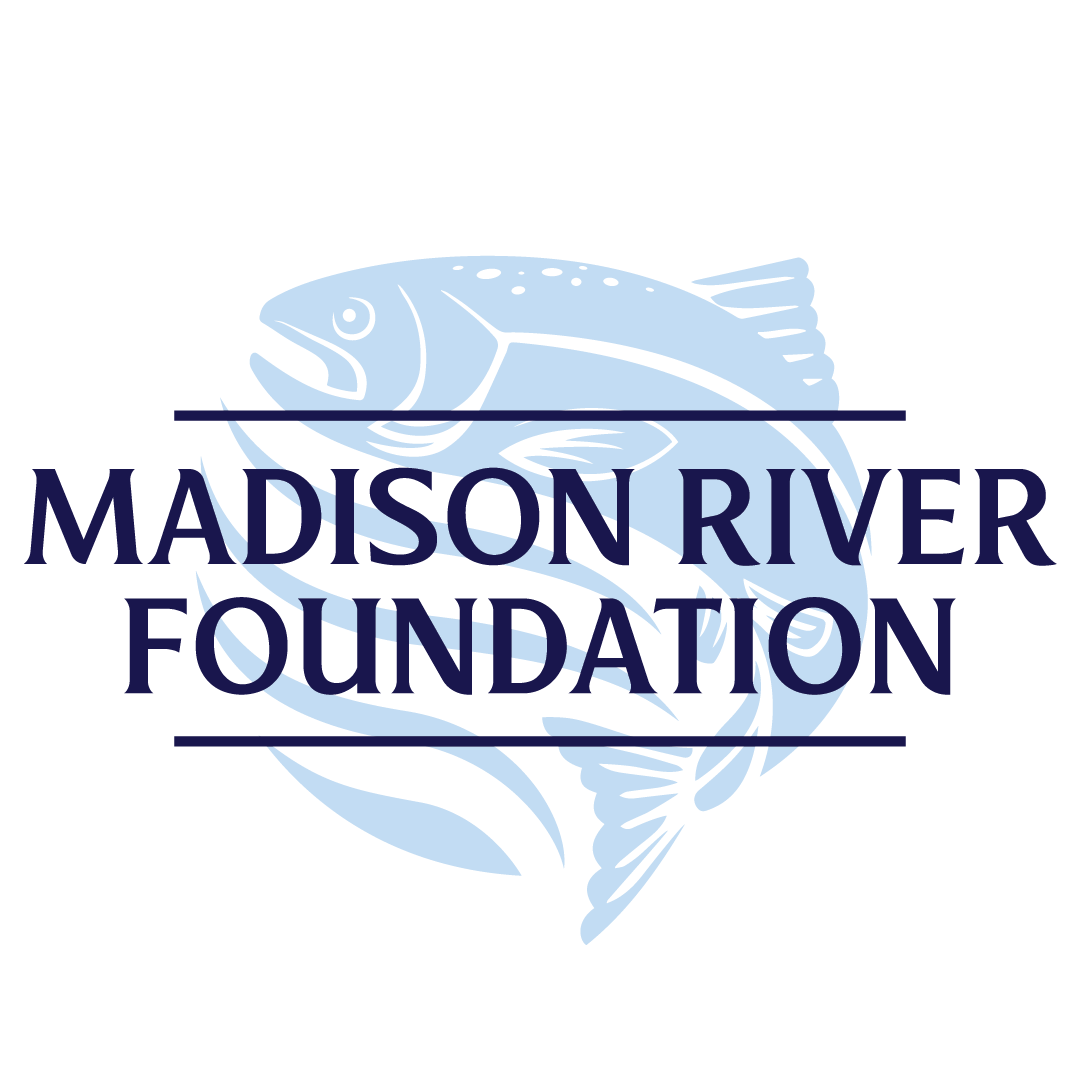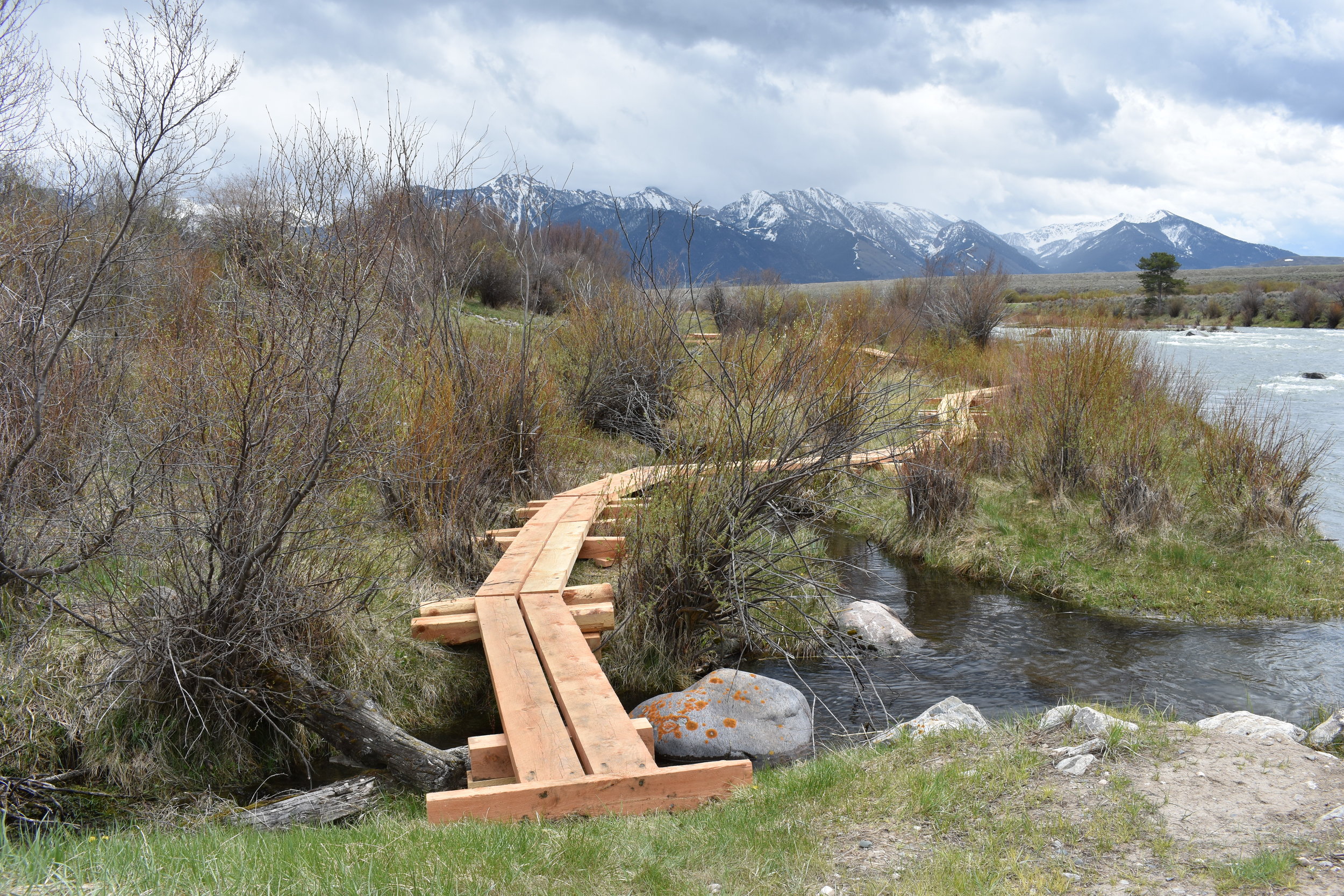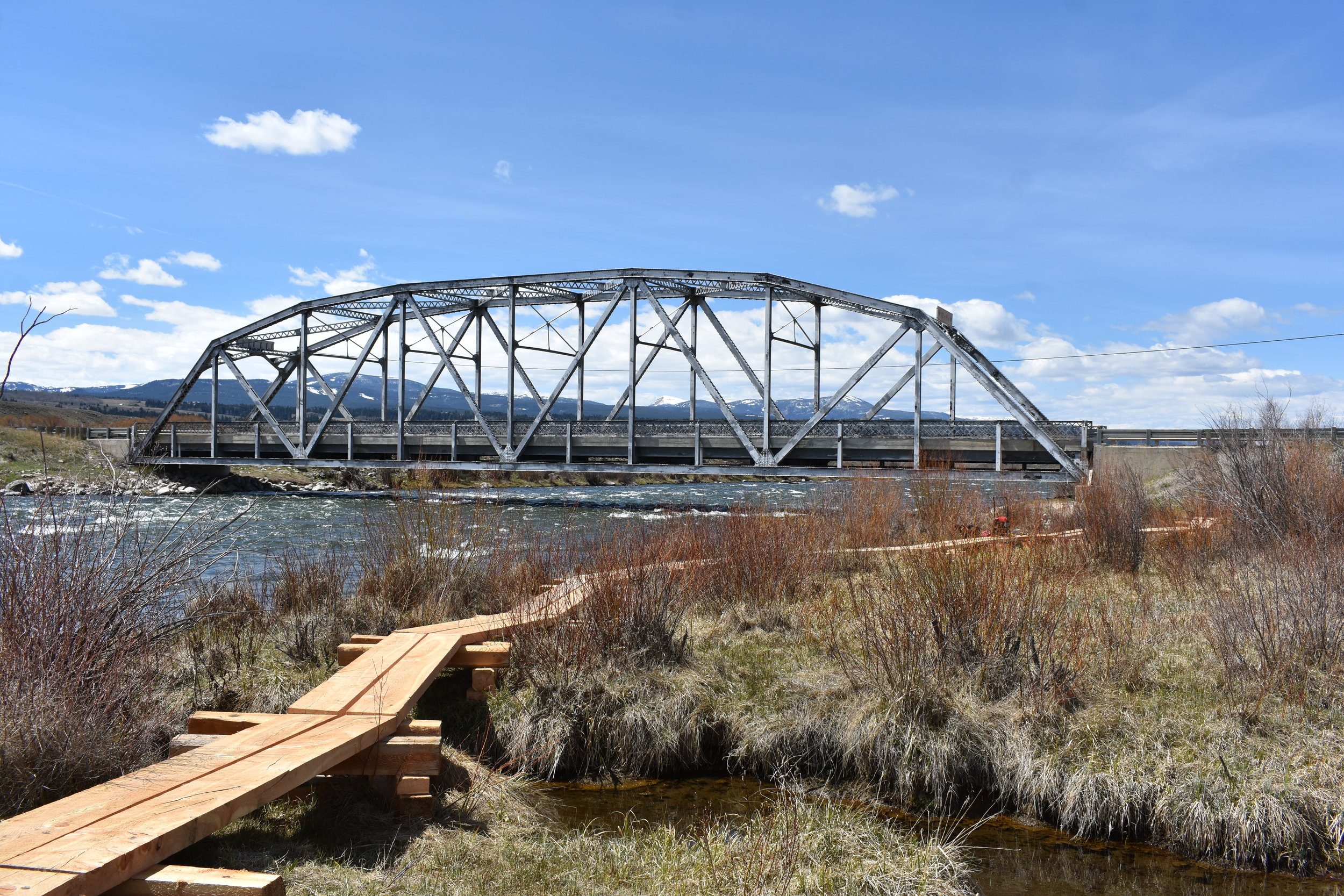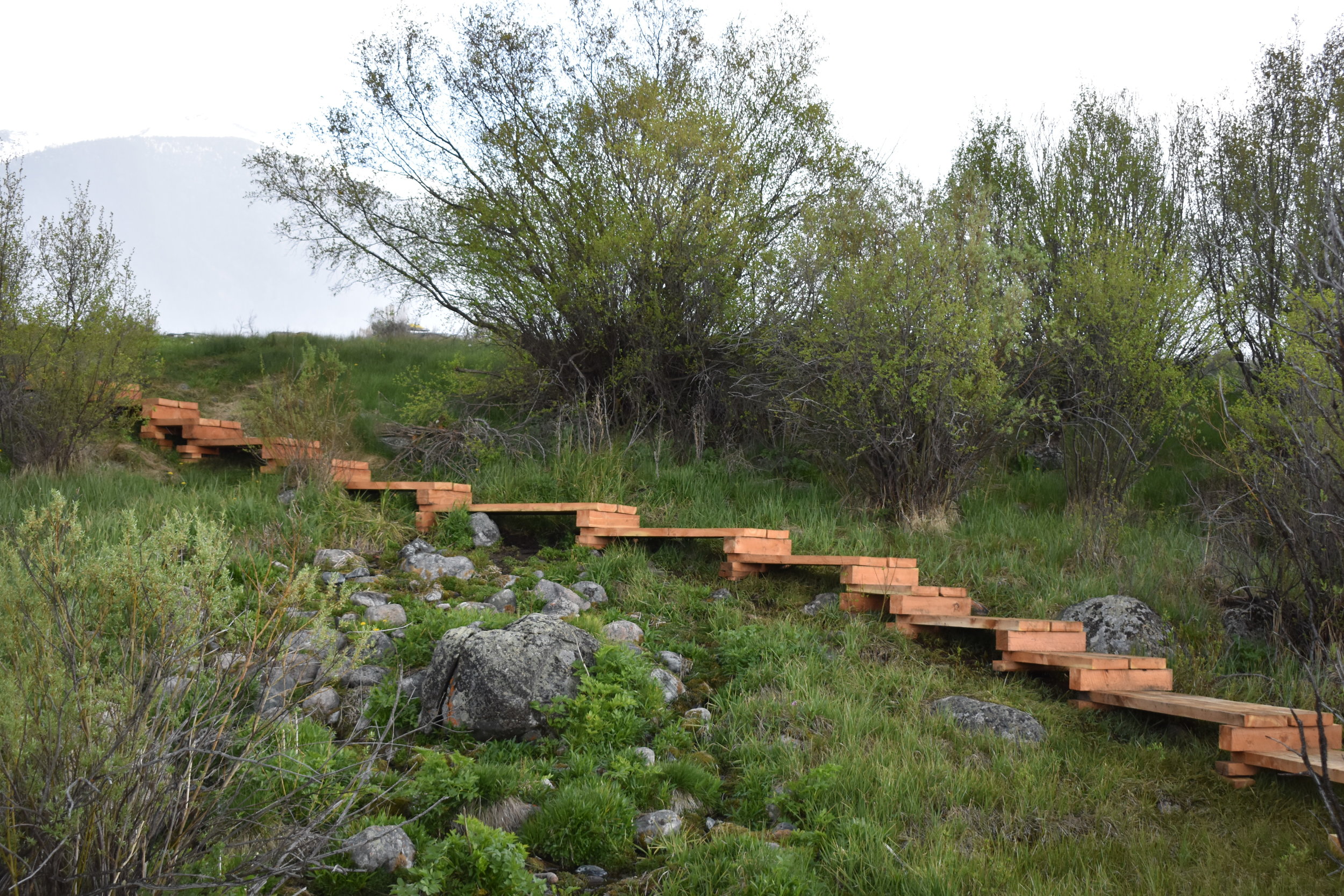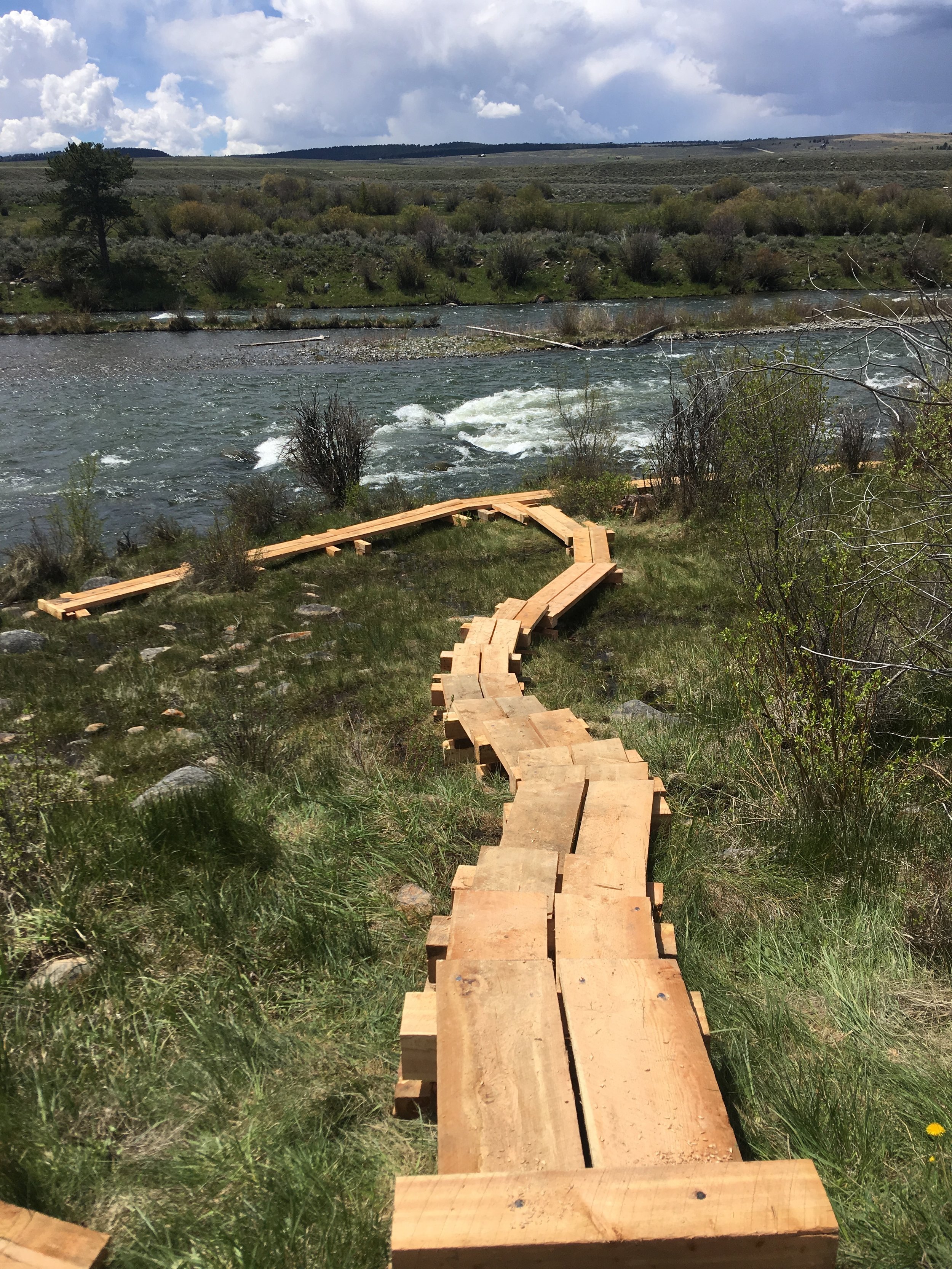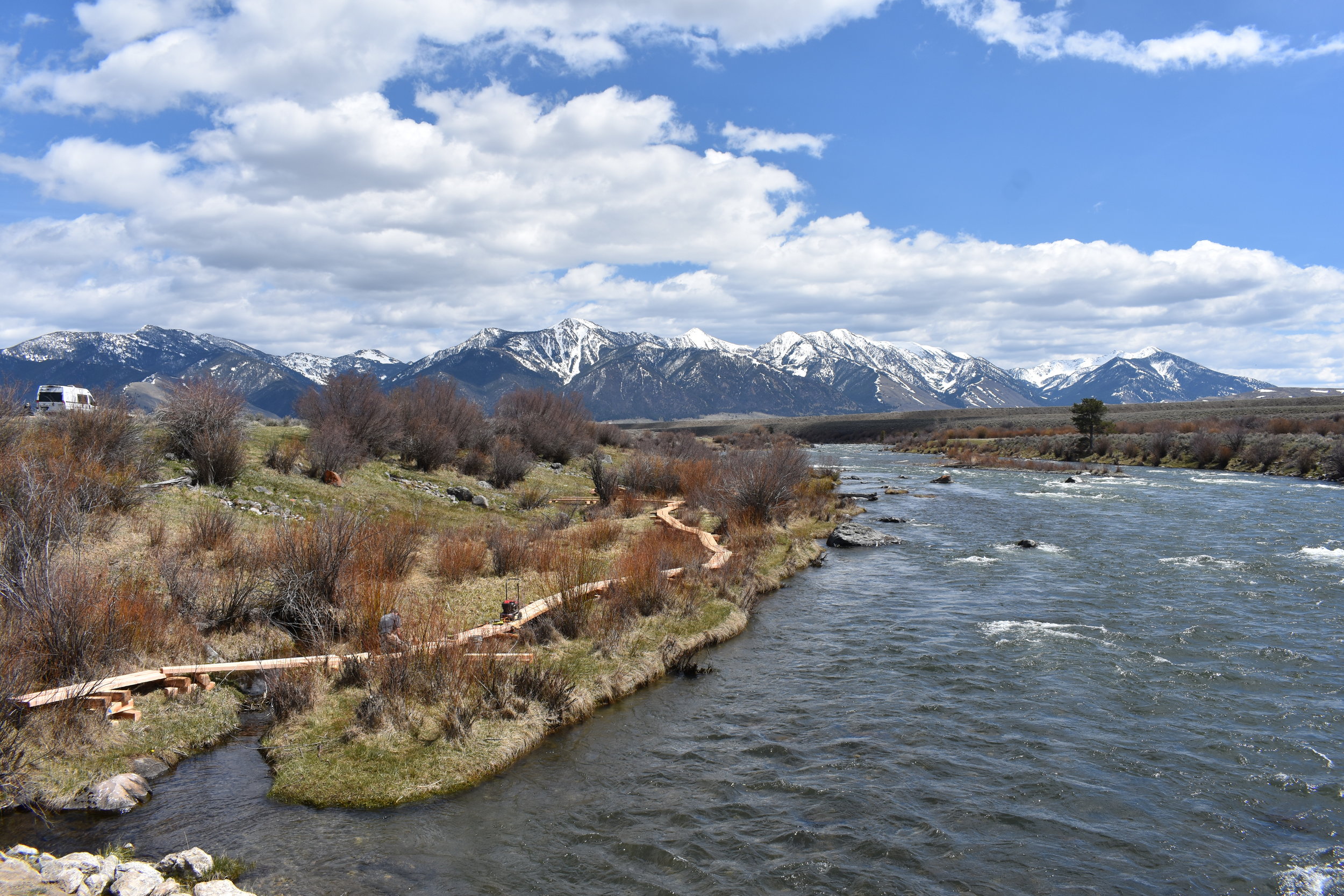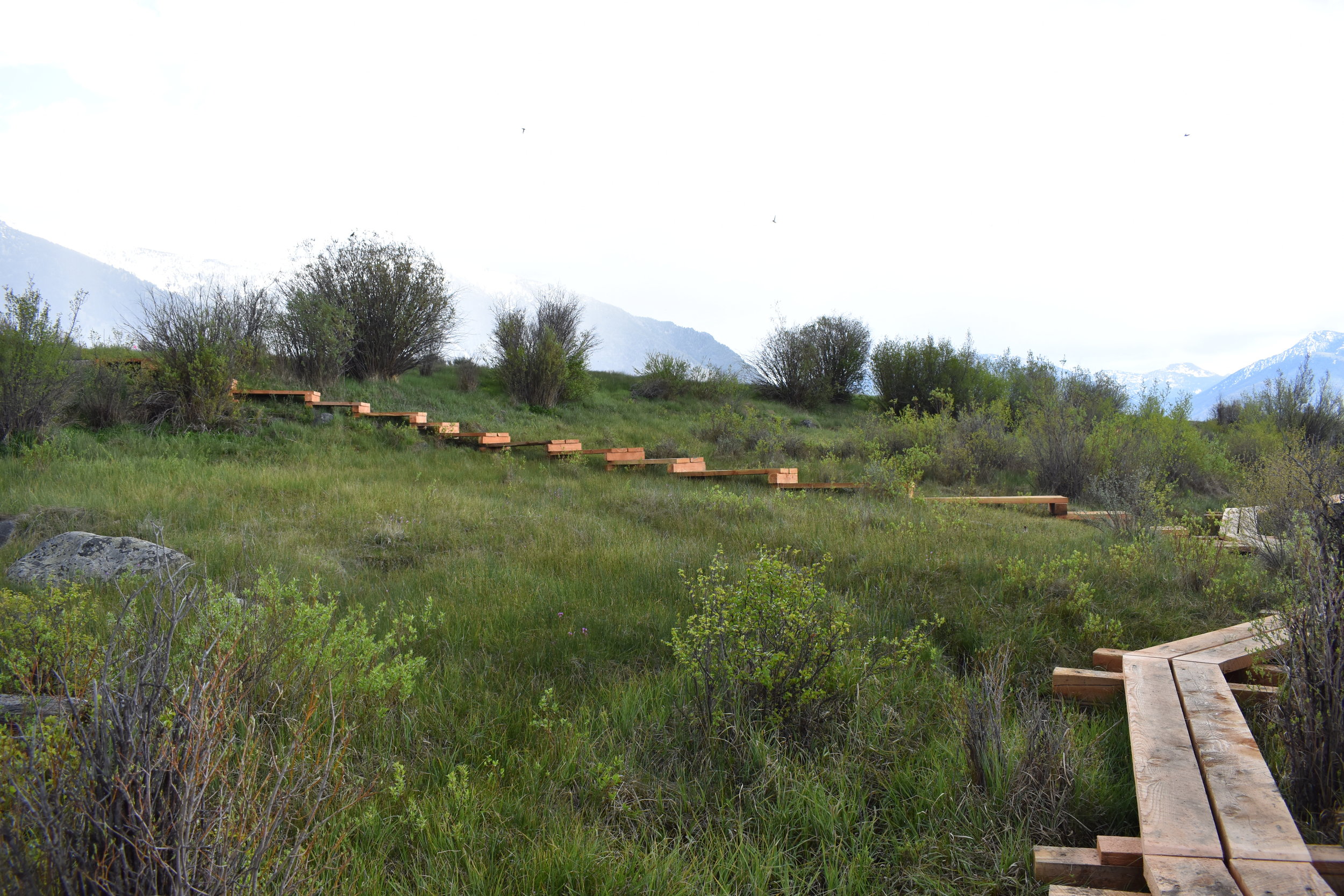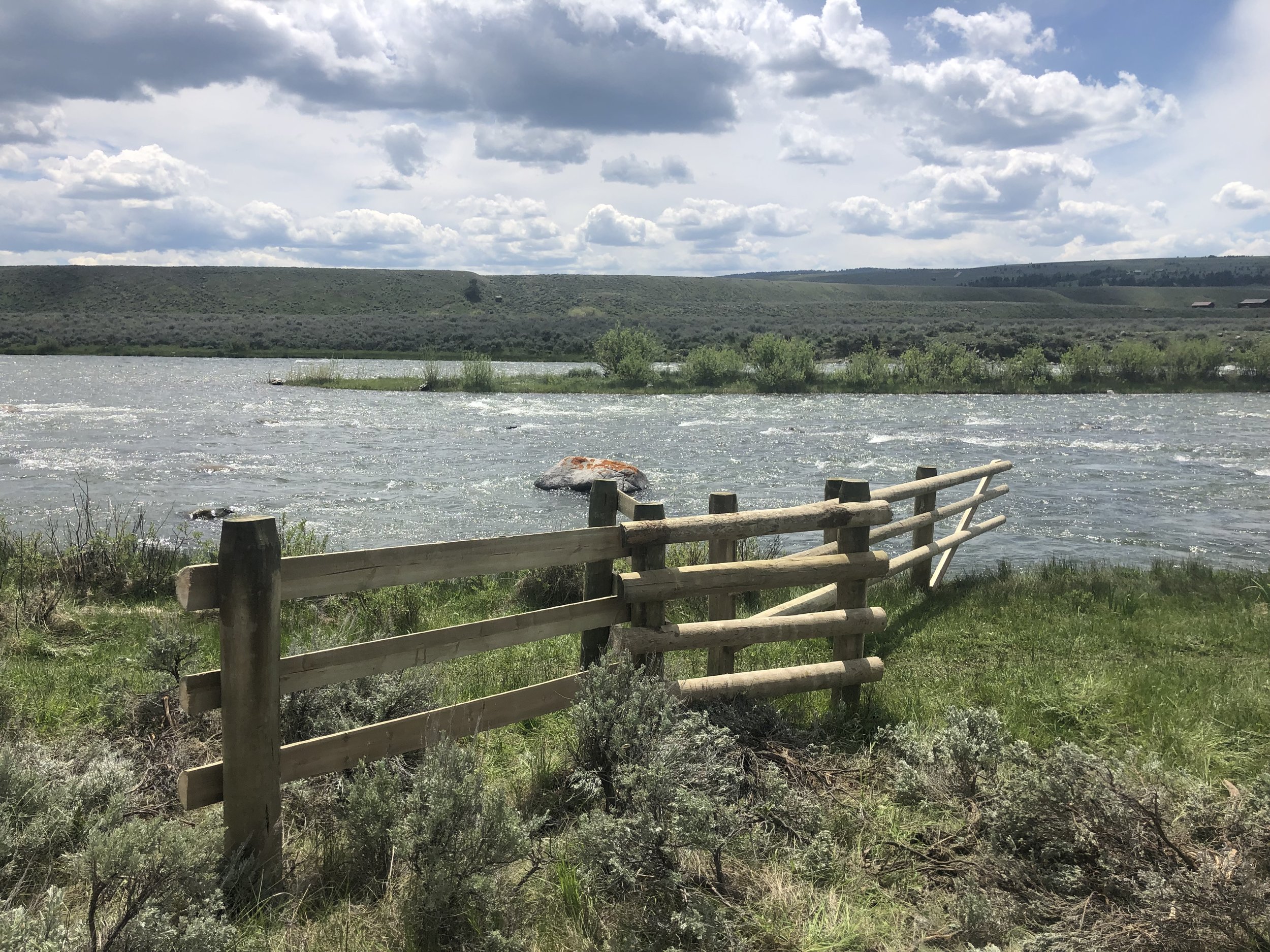
Completed Projects
Three Dollar Bridge Riparian Restoration Project
The first project of the Madison River Riparian Restoration Plan, the Three Dollar Bridge Project is in now complete! Restoration work involved clearly defining fishing access trails, exclosure fencing, planting, and seasonal electric fencing to restore and protect connected off-channel riparian and aquatic habitat. The riparian area and slope wetland at the Three Dollar Bridge Fishing Access Site provide habitat for wildlife, shade and cover for fish, support the food web, and help sustain clean, cool water inputs to the river. The restoration project addressed limiting factors such as livestock trampling, wildlife browse, and recreational impacts to enhance the riparian corridor so the Madison River remains one of the world’s greatest fisheries for generations to come.
The first phase of on the ground work at Three Dollar Bridge began in early May by clearly defining fishing access trails. Wildwood Trails, Inc. constructed 750 feet of plank bridges in the wetland areas adjacent to the river to route traffic behind riparian vegetation and direct users to specific river access points in gravel or cobble areas to limit disturbance to sensitive wetland habitat. Three access trails were constructed down the slope using 150 feet of crib stairs to connect the upper terrace trail to the lower stream bank trail, providing river access.
In early June, three wildlife exclosures and five willow wall fences were installed by Stosich, Inc. to protect the riparian corridor along the river. Following the fence installations, 250 willows and cottonwoods were planted among the eight exclosures. These exclosures will allow the new vegetation to establish and existing vegetation to thrive without the disturbance of human or wildlife activity, and to expand the ecological function of the unique slope wetland. As native shrubs and trees within the exclosures grow and expand over time they will help focus foot traffic on designated trails. Woody vegetation canopy cover, recreational impacts, and wildlife and livestock impacts will be monitored on a yearly basis for the next 10 years.
Fence extensions for temporary electric fencing were installed on livestock grazing pastures for the Three Dollar Ranch and previous electric fencing that is no longer utilized was removed to support the wildlife corridor. At the fishing access site, a jackleg fence was installed along the terrace trail to guide users to the newly installed trail developments in the wetland area. An educational sign was installed on the jackleg fence with a map depicting the locations of the access trails and information regarding the importance of protecting riparian corridors. The project was completed mid-July with the installation of a cattle guard on the east side of the river.
By defining access routes and protecting native riparian plants and wetlands, the Three Dollar Bridge project helps support the balance of ecological river stewardship with the increase in use by fishermen and others who enjoy the Madison River. This is the first project of the Madison River Riparian Restoration Plan and results from monitoring this project will be used to inform future projects along the Madison River.
The project has been made possible by support from generous donors and various partners including Montana Fish, Wildlife and Parks, Three Dollar Ranch, Geum Environmental Consulting, Northwestern Energy, Montana’s Outdoor Legacy Foundation, Montana Trout Foundation, and Three Rivers Communications.
Natal Streams Project
We collaborated on a project cooperative with FWP to determine the number of adult fish in the river originating in the tributaries vs the main river. A two-step study will include analysis of water samples from the tributaries and then analysis of fish taken during the 2020-2021 population study (via electroshocking).
FWP has already collected water samples from 36 tributaries from Hebgen Dam to Three Forks. These samples will be analyzed for micro-chemical constituents and isotope distributions. If enough of the tributaries can be distinguished by their chemistry, the project will proceed to the second step.
For phase two, adult fish have been collected from the river as parted of a 2020-2021 mortality study funded by FWP and NWE. The same fish can be used in the work sponsored by MRF. An otolith is a small bone in the trout’s skull. It grows one annular ring of bone each year of a trout’s life, similar to tree rings. The micro-chemistry of each ring can be analyzed by a special laser technique. The micro-chemistry of the inner most ring is fixed by the stream chemistry where the fish originated. Matching the water chemistry of the tributaries to the otolith chemistry can match a fish to a tributary. The technique has been used with great success on Hebgen Lake, the Yellowstone River, and Fort Peck Reservoir.
Overall, the data will allow an estimate how many fish a given tributary contributes to the river or if tributaries are even important contributors to the fish population in the river. Understanding trout populations and factors affecting them is a key focus of MRF in protecting and preserving the river. If tributaries play a small role then we can focus our efforts on supporting work on in-river spawning and young trout nurseries there. If major tributaries are not contributing to populations as expected we can focus support on trying to understand causes and remedying them.
The initial micro chemical analyses on the 36 water samples have been completed and look promising.
